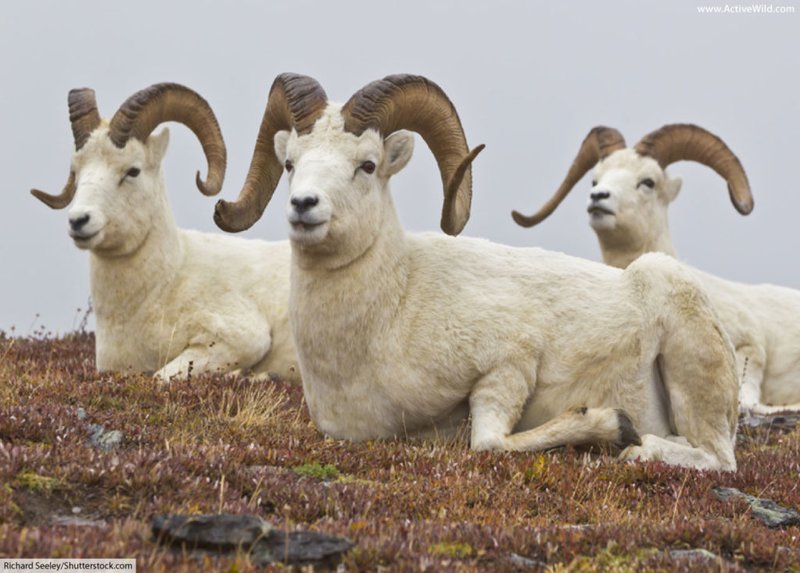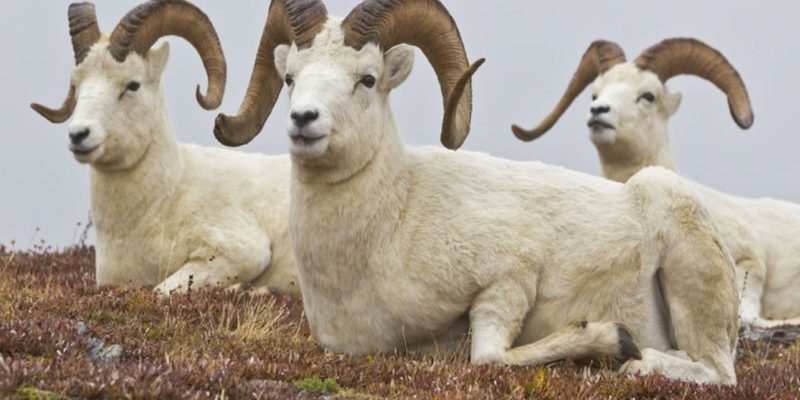
We’re diving into a fascinating world of wildlife today, exploring ten animals that resemble the Dall sheep. Sure, they might all have that mountain vibe, but each one boasts unique traits that help you tell them apart. Think of it like recognizing different friends at a party—they might all have similar fashion styles, but their personalities and quirks make them distinct. So, grab a cup of coffee, and let’s explore who’s who in the world of sheep and their look-alikes!
1. Bighorn Sheep
The bighorn sheep is probably the closest relative to the Dall sheep. Native to the Rocky Mountains, these animals are known for their impressive horns that can curl almost in a full circle. You might spot a bighorn sheep with a sandy-colored coat, which is a bit darker than the Dall sheep’s pure white.
What’s interesting is how bighorn sheep often live in larger herds compared to Dall sheep, which can make for a spectacular sight when they’re climbing steep cliffs. If you’re trying to distinguish between the two, look for the coloration and the horn shape—the bighorn’s horns are more spiraled while the Dall’s are more gracefully curved.
2. Mountain Goat
Next up is the mountain goat, which is another resident of the rocky terrains. Though they’re often confused with sheep, mountain goats are actually more closely related to antelopes. They have thick white fur too, which helps insulate them against harsh mountain weather.
One way to tell them apart is by their physique. Mountain goats have a stockier build with shorter, straighter horns compared to the Dall sheep. Their hooves are also uniquely designed for climbing steep surfaces, giving them an edge when it comes to navigating rugged landscapes.
3. Churro Sheep
The Churro sheep is a lesser-known breed, but it’s worth mentioning due to its striking appearance. This breed often has long, twisting horns similar to the bighorn sheep but typically has a woolly coat that can be a mix of colors.
Unlike the Dall sheep, Churro sheep have a more domestic look. They are known for their curly fleece, which was once prized for making textiles. Keep an eye out for those twists in their horns and the unique texture of their wool to spot a Churro sheep.
4. Ibex
The ibex might take you on a little detour since it’s primarily found in Europe and Asia. These animals have magnificent, curved horns that can reach impressive lengths. Their coats can range from light brown to grayish, but they share the Dall sheep’s love for rocky habitats.
One standout feature of the ibex is its agility; they can scale steep cliffs with apparent ease. Plus, their facial markings set them apart, as they often have a light beard of fur beneath their chin. If you ever spot one, you’ll likely see it perched on a cliff edge, looking at you as if it’s on top of the world.
5. Altai Argali
The Altai argali is a wild sheep found in Central Asia. They’re known for their impressive size and massive horns that can curve outward dramatically. This species can have a woolly coat similar to the Dall sheep, but their coloration tends to be more of a brownish-tan.
These sheep are known for their impressive stature, often weighing much more than a Dall sheep. If you see a sheep with grand horns and a confident demeanor, there’s a good chance you’re looking at an Altai argali.
6. Muskoxen
The muskoxen look a bit like shaggy, oversized sheep but are actually entirely different species. Found primarily in the Arctic, these animals have thick coats designed for frigid temperatures. Their frosty appearance might remind you of Dall sheep, but they have a distinctive long-haired pelage and large, curved horns that remind you more of a bison.
Although they can live in similar environments, muskoxen have a bulkier build and a unique social structure, often gathering in herds for protection against predators. If you’re ever hiking in the tundra and spot one, it’ll likely be amidst its herd, huddled together for warmth.
7. Tibetan Antelope
The Tibetan antelope, or chiru, is another animal to consider. Though not a sheep, it shares the high-altitude lifestyle of the Dall sheep. Their coats are thick and long, providing warmth in the high plateau regions of Tibet.
Unlike the Dall sheep’s horns, the Tibetan antelope has slender, graceful horns that sweep back elegantly. These animals are also known for their speed and agility when fleeing from predators, making them a fascinating counterpart to the more stocky Dall sheep.
8. Guanaco
While not a sheep, the guanaco is a close relative of the llama and shares a similar habitat in the mountainous regions of South America. With a thin body and a short coat that can resemble the Dall sheep’s white fur, these animals are often seen grazing on the Andean slopes.
The major difference lies in their size and demeanor; guanacos are much taller and have longer necks. Plus, they have a unique, slightly reddish-brown color on their backs, standing out against the white of the Dall sheep.
9. Merino Sheep
The Merino sheep is famous for its fine wool, and while they are domesticated, they share some similarities in terms of habitat preference. Merino sheep have a curly, soft coat and can occasionally be found in mountainous regions, although they tend to flock more towards lower altitudes.
To distinguish Merino sheep from Dall sheep, look at their wool and overall appearance—Merinos are usually more rounded with less prominent horns. It’s also interesting to note how they’ve been bred for wool quality rather than rugged survival traits found in Dall sheep.
10. Mouflon Sheep
Lastly, let’s talk about the mouflon sheep, a wild sheep species that can be found in Europe and Asia. They have a rustic appearance with a woolly coat and prominent curved horns like the Dall sheep, yet they typically have a distinct reddish-brown coloration.
Mouflon are known for their adaptability in various environments, which makes them stand out in the wild. The best way to tell them apart from the Dall sheep is to observe their coat and habitat. Mouflons thrive in denser forests, unlike the Dall sheep that favor open, rugged terrains.
In conclusion, recognizing the similarities and differences among these animals can enhance your appreciation for wildlife. Each species has adapted uniquely to its environment, whether that’s the icy tundra or the rocky mountains. Next time you’re out in nature, you might just spot a Dall sheep or one of its close relatives—just remember to look closely and enjoy the beauty of each unique creature!

